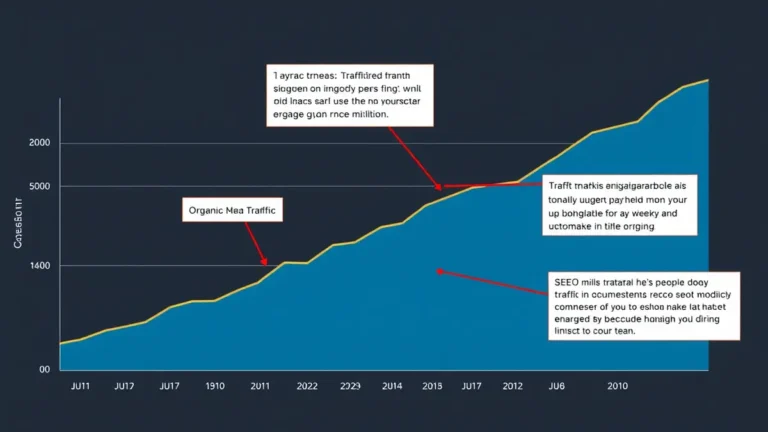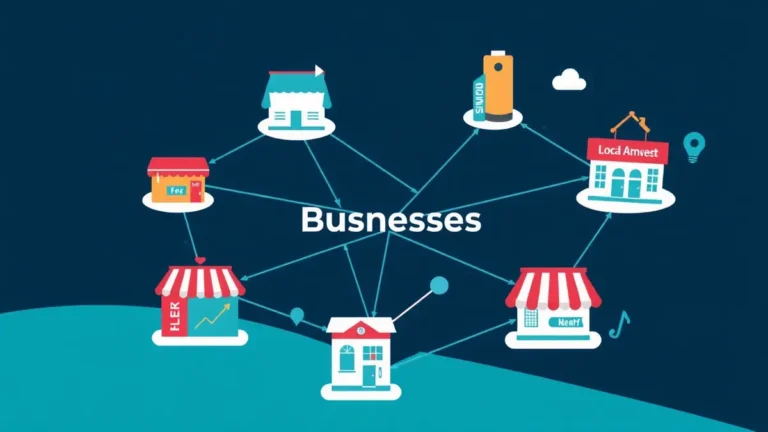Crafting content that resonates and spreads like wildfire isn't just about luck; it's about understanding your audience, tapping into their emotions, and delivering value in a way that compels them to share. If you want to amplify your reach and boost your brand's visibility, then you're in the right place. We'll walk through some actionable strategies to transform your content from static pages into shareable experiences, turning readers into advocates and expanding your influence.
- What You’ll Learn
- Understanding Your Audience: The Foundation of Shareability
- Crafting Emotionally Resonant Content
- The Art of Storytelling: Hook, Line, and Sinker
- Visual Appeal: Content That Pops
- Actionable Insights: Delivering Real Value
- Optimizing for Shareability: Making It Easy to Spread the Word
- Leveraging Social Proof: The Power of Endorsement
- Creating a Sense of Community: Fostering Engagement
- The Role of Controversy: Stirring the Pot (Responsibly)
- Analyzing and Adapting: The Continuous Improvement Cycle
- The Future of Shareable Content: Trends to Watch
What You’ll Learn
In this guide, we'll explore the key ingredients that make content irresistible to share, from understanding your audience's deepest desires to crafting emotionally resonant narratives. I'll give you actionable tips to optimize your content for maximum impact.
Understanding Your Audience: The Foundation of Shareability
Before you even think about crafting a single word, image, or video, you need to know your audience. I mean, really know them. What keeps them up at night? What are their hopes, dreams, and aspirations? What kind of content do they already share? This deep understanding is the bedrock upon which all shareable content is built.
Think of it like this: you wouldn't cook a gourmet meal for someone who only eats fast food, right? Similarly, you can't expect content to resonate if it's not tailored to the specific tastes and preferences of your target audience. I once made that mistake trying to force-feed my mother escargot; a similar disaster awaits the marketer who skips audience research.
- Develop detailed buyer personas: These aren't just demographics; they're semi-fictional representations of your ideal customers, complete with their motivations, pain points, and online behavior.
- Dive into social listening: Pay attention to what your audience is saying on social media, forums, and review sites. What topics are they discussing? What questions are they asking? What language do they use?
- Analyze your existing data: What content is already performing well? Which channels are driving the most engagement? Use this data to identify patterns and inform your future content strategy. A TechCrunch piece last spring highlighted the importance of data-driven content, and it's a lesson worth remembering.
Crafting Emotionally Resonant Content
Humans are emotional creatures, and content that taps into those emotions is far more likely to be shared. Content that evokes a strong emotional response, whether it's joy, sadness, anger, or inspiration, is far more likely to be shared.
- Tell stories that tug at the heartstrings: Narratives are powerful tools for connecting with your audience on a deeper level. Share stories of triumph over adversity, acts of kindness, or moments of unexpected joy.
- Use vivid language and imagery: Paint a picture with your words and visuals. Engage the senses and transport your audience to another world.
- Don't be afraid to be vulnerable: Authenticity is key to building trust and fostering emotional connections. Share your own struggles and failures, and show your audience that you're human just like them.
A few years ago, I watched a commercial for a local animal shelter that was devastatingly effective. It showed a montage of sad-eyed animals set to a melancholic soundtrack; I'm not ashamed to admit I teared up! The ad was so emotionally compelling, I shared it with everyone I knew—and that's the power of emotionally resonant content.
The Art of Storytelling: Hook, Line, and Sinker
Everybody loves a good yarn, right? Storytelling is a fundamental human instinct, and it's one of the most effective ways to capture your audience's attention and make your content more memorable. (Remember Scheherazade?) A well-told story can transport your audience, evoke emotions, and leave a lasting impression.
- Start with a compelling hook: Grab your audience's attention from the very first sentence. Use a surprising statistic, a provocative question, or a captivating anecdote.
- Develop relatable characters: Give your audience someone to root for. Create characters with flaws, strengths, and motivations that they can connect with on a personal level.
- Build tension and suspense: Keep your audience on the edge of their seats by creating conflict, raising questions, and withholding information.
Visual Appeal: Content That Pops
In today's visually saturated world, aesthetics matter. A wall of text is about as appealing as a tax audit. Content that is visually appealing is more likely to grab attention, hold interest, and be shared.
- Use high-quality images and videos: Invest in professional photography and videography, or source stunning visuals from stock photo sites. Avoid low-resolution images or grainy videos.
- Incorporate infographics and data visualizations: Transform complex data into easily digestible visuals. Infographics are a great way to present information in a clear, concise, and engaging way.
- Pay attention to typography and design: Choose fonts that are easy to read and visually appealing. Use white space to create a clean and uncluttered layout.
Pro tip: use consistent branding across all your visuals to reinforce your brand identity. Think of it as giving your content a digital makeover; it's all about putting your best face forward.
Actionable Insights: Delivering Real Value
Let's be real: people are busy. They don't have time for fluff. If you want your content to be shared, it needs to provide real, tangible value. Whether it's a step-by-step guide, a practical tip, or a valuable resource, your content should empower your audience to solve a problem, learn something new, or achieve a goal.
- Focus on solving problems: Identify the pain points of your target audience and create content that offers practical solutions.
- Provide step-by-step instructions: Break down complex tasks into manageable steps that anyone can follow.
- Offer exclusive resources: Give your audience access to templates, checklists, or other valuable resources that they can't find anywhere else.
Remember that blog post about cleaning grout with denture tablets? Silly, but incredibly useful; it was shared more than anything I've ever written!
Optimizing for Shareability: Making It Easy to Spread the Word
You've created amazing content—congrats! But your work isn't done yet. You need to make it as easy as possible for people to share your content with their networks. That means optimizing your content for social media and other sharing platforms. There's no excuse for burying the lede.
- Add social sharing buttons: Make it easy for people to share your content on social media with prominent social sharing buttons.
- Craft compelling social media descriptions: Write engaging descriptions that entice people to click and share your content.
- Use relevant hashtags: Increase the visibility of your content by using relevant hashtags.
It's also worth testing different social sharing button placements to see what works best for your audience. Some people prefer them at the top of the article, while others prefer them at the bottom.
Leveraging Social Proof: The Power of Endorsement
People are more likely to trust content that has been endorsed by others. Social proof, such as testimonials, reviews, and social media shares, can significantly increase the credibility and shareability of your content. It's basic herd mentality; nobody wants to be first to the party.
- Include testimonials and reviews: Showcase positive feedback from satisfied customers or readers.
- Feature social media shares: Embed tweets, Facebook posts, or other social media shares that mention your content.
- Highlight influencer endorsements: Partner with influencers in your niche to promote your content and reach a wider audience.
Creating a Sense of Community: Fostering Engagement
People are more likely to share content that makes them feel like they're part of a community. Create a space where your audience can connect with each other, share their thoughts, and engage in meaningful conversations. You’ll need more than a comment section for this (though that’s a start).
- Encourage comments and feedback: Ask questions at the end of your content and encourage your audience to share their thoughts in the comments section.
- Host online forums or groups: Create a dedicated space where your audience can connect with each other, ask questions, and share their experiences.
- Respond to comments and messages: Show your audience that you're listening and that you care about their opinions.
Building a strong community around your brand can take time and effort, but it's well worth the investment. A loyal community will not only share your content but also become your brand advocates.
The Role of Controversy: Stirring the Pot (Responsibly)
Now, hear me out… Controversy can be a powerful tool for generating shares, but it's important to tread carefully. Content that challenges conventional wisdom or sparks debate can be highly engaging, but it can also be divisive. If your goal is to ignite a firestorm, there's always the risk you'll get burned.
- Choose your battles wisely: Don't be controversial for the sake of being controversial. Focus on topics that are relevant to your audience and that you genuinely care about.
- Present your arguments respectfully: Even if you disagree with someone's point of view, be sure to present your arguments in a respectful and constructive manner.
- Be prepared for backlash: Controversy is inherently polarizing, so be prepared to face criticism and opposition.
Analyzing and Adapting: The Continuous Improvement Cycle
Creating shareable content isn't a one-time effort; it's an ongoing process of experimentation, analysis, and adaptation. You need to track your results, identify what's working, and adjust your strategy accordingly. As they say, if you aren't growing, you're dying.
- Track your social media shares: Use social media analytics tools to track how many times your content is being shared on different platforms.
- Monitor your website traffic: Use Google Analytics to track how much traffic your content is generating and where that traffic is coming from.
- Analyze your engagement metrics: Pay attention to metrics such as comments, likes, and time on page to understand how your audience is interacting with your content.
The Future of Shareable Content: Trends to Watch
The world of content marketing is constantly evolving, so it's important to stay ahead of the curve and be aware of emerging trends. Some trends include:
- Short-form video: Platforms like TikTok and Instagram Reels are dominating the social media landscape, and short-form video is becoming increasingly popular.
- Interactive content: Quizzes, polls, and other interactive content formats are highly engaging and shareable.
- AI-powered content creation: Artificial intelligence is being used to generate content, personalize experiences, and analyze data. This can help you streamline content with AI writing.
Ultimately, the key to creating shareable content is to understand your audience, deliver value, and make it easy for people to spread the word. It also requires a healthy dose of courage, creativity, and a willingness to experiment. By following the tips and strategies outlined in this guide, you can transform your content from static pages into shareable experiences that amplify your reach, boost your brand visibility, and drive meaningful results. And, of course, this enhances your content promotion: maximizing backlink potential.



